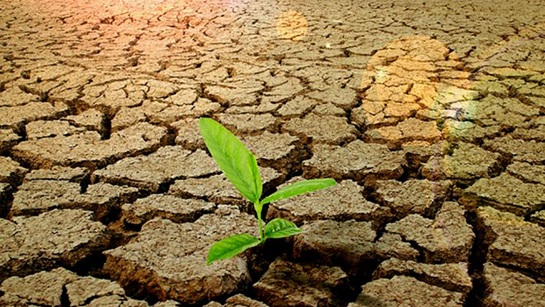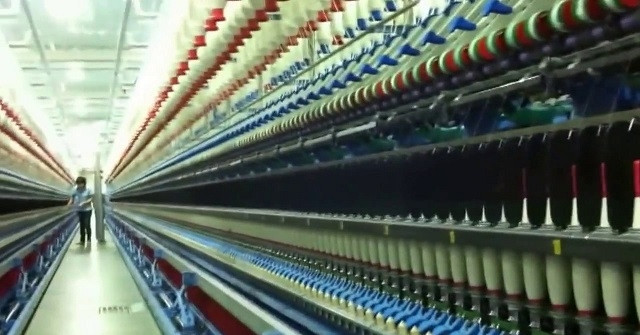






The Lao economy is gradually recovering from the COVID-19 pandemic, with GDP growth forecasted at 3.7% this year, according to the World Bank [bef3be43]. The economic improvement is attributed to stronger performance in tourism, transport, logistics services, and increased foreign investment. However, challenges such as skyrocketing inflation, high external debt, and a labor shortage still persist [bef3be43]. Inflation remains high at 26%, mainly due to the weakening national currency. To restore economic stability, the World Bank recommends raising VAT, restructuring taxes on tobacco and alcohol, and increasing revenue for health and education. Public spending on education and health has declined due to high debt repayments [bef3be43]. The report suggests measures to improve revenue collection, such as restoring VAT to its previous rate, revising the investment promotion law, reforming excise tax structures, and strengthening tax administration. Economic growth is projected to accelerate to an average of 4.2% in the medium term, driven by services, exports, and improving connectivity and logistics services [bef3be43].
Laos has reasons for optimism despite high inflation and national debt. Tourism is expected to recover to pre-pandemic levels this year, and its ASEAN chairmanship is boosting its international profile and trade prospects [e9629087]. Laos has bet on food exports to China, which is facing a population decline and relies on imports for food. The country's exports to China have grown to $1.4 billion in 2023 [e9629087]. Laos is also investing in railway connections to China, Thailand, and Vietnam, which will open up more trade opportunities [e9629087]. Laos has the youngest population in ASEAN and a healthy workforce, with only 4.7% of the population aged above 65 [e9629087]. However, the government's handling of the economy has been incompetent, with high inflation and a growing national debt [e9629087]. Laos imports too much and has little control over exports, resulting in a significant portion of export revenue not reentering the country [e9629087]. The education sector is also in poor health, with high absentee rates among students and a decline in government spending on education [e9629087]. Laos needs to address revenue collection, control special economic zones, and diversify its trade partners [e9629087]. The decline of China's economy and the deglobalization trend could impact Laos' trade prospects [e9629087]. Laos' industrialization may be weakened by emigration, particularly to Thailand and China, which will need more migrant workers [e9629087]. Laos needs to take action to rectify its economic problems and make difficult decisions to ensure a brighter future [e9629087].
Climate change poses a significant threat to the Lao economy, with prolonged droughts damaging energy production and agricultural activities. Ms. Sengphasouk Xayavong from the Ministry of Natural Resources and Environment highlighted the link between climate change, water scarcity, and economic development during a regional panel discussion [c558c5c4]. She mentioned that climate change is one of the primary causes of prolonged droughts in Laos, which could severely impact energy production and agricultural activities. Water scarcity could damage agricultural activities, affecting farmers without access to irrigation systems. In addition to climate change, high water consumption due to population growth and unsustainable agricultural practices contribute to water scarcity in Laos. The country's mountainous terrain also poses challenges for expanding the water supply network. Economic losses due to water scarcity in Laos were US$40 million in 1988, US$20 million in 1989, US$5 million in 1998, and US$16 million in 2003. Water scarcity could disrupt hydropower production, leading to energy shortages and affecting domestic consumption and export revenues. The Lao government has invested in water infrastructure and promoted international cooperation to ensure the sustainable and equitable distribution of water resources. Laos is currently facing a shortage of water needed for electricity generation, resulting in reduced electricity generation and the need to import electricity from neighboring countries. Laos has more than 70 electricity generation facilities, mainly hydropower, but most are foreign-owned and dedicated to export [c558c5c4].
Meanwhile, experts believe that Vietnam will be able to control inflation below the target set by the National Assembly this year due to slow growth in major world powers, moderate export growth, and low growth in the industry and construction sector. If GDP growth hovers around 6% in 2024, the average inflation for the whole year is forecasted to be around 3% - 3.5%, lower than the target set by the National Assembly. The State Bank of Vietnam's anti-inflation policies have been effective over the past 10 years. Economic experts suggest closely monitoring the health of the world economy and ensuring the market law of supply and demand to stabilize domestic prices [10f625bf].
In Southeast Asia, senior finance and central bank officials from ASEAN countries, including Laos and Vietnam, met in Luang Prabang, Laos to discuss ways to build resilience against shocks like the COVID-19 pandemic and natural disasters caused by climate change. The meeting included discussions on green finance, an ASEAN infrastructure fund, disaster risk financing and insurance, and refining a 'taxonomy' to identify projects that support ASEAN's sustainability agenda [9e18a796]. ASEAN countries have committed to cutting carbon emissions but struggle to find ways to make the transition. The region is vulnerable to extreme weather, drought, and rising sea levels, and estimates suggest that investments in clean energy need to increase by five to seven times, to more than $200 billion a year [9e18a796]. Laos, a landlocked country with a shrinking economy, is rich in hydroelectric power but faces challenges in reducing crop burning and tackling regional issues like human trafficking and the illicit drug trade. The country is also focused on integrating itself into the wider regional economy and has deepened ties with China through infrastructure projects like the $6 billion high-speed railway [9e18a796]. The finance meetings in Luang Prabang were attended by senior officials from international financial institutions, as well as delegates from Japan, China, the U.S., and other major economies. U.S. Treasury Secretary Janet Yellen did not attend the talks but traveled to China for meetings with American business leaders and Chinese officials. The region is experiencing rivalries for influence, as highlighted by the visits of Indonesia's President-elect Prabowo Subianto and the foreign ministers of Vietnam, Laos, and East-Timor to Beijing [9e18a796].
In a recent development, the Southeast Asia Green Economy Index has been launched to help Southeast Asian markets track decarbonization progress. The index covers five metrics: ambition, progress, roadmap, accelerator, and investment. Singapore and Vietnam have made the most progress in reducing greenhouse gas emissions. Eight out of 10 countries in the region have net zero targets, and more than half of the region's top emitting corporates have set net zero or emission reduction targets. Seven countries have shown progress in adopting renewable energy and electric vehicles, preserving forestland, and enhancing the health of cropland soil [13039c3c].
Senior finance and central bank officials from Southeast Asia and major economies met in Luang Prabang, Laos to discuss ways to help the region build resilience against shocks like the COVID-19 pandemic and natural disasters brought on by climate change. The officials discussed green finance, an ASEAN infrastructure fund, disaster risk financing and insurance, and refining a 'taxonomy' to identify projects that support ASEAN's sustainability agenda. Southeast Asian countries, including Laos, have committed to seeking more sustainable ways to feed their people and power their economies, but struggle to find the financing needed. Investments in clean energy in the region need to increase by five to seven times, to more than $200 billion a year. The region is also vulnerable to extreme weather, drought, and rising sea levels. Laos, a landlocked country with a shrinking economy, is rich in hydroelectric power but faces challenges in reducing the number of fires caused by crop burning. The country is also focused on integrating itself into the wider regional economy. The finance meetings in Luang Prabang were attended by senior officials from major international financial institutions and delegates from Japan, China, the U.S., and other major economies. U.S. Treasury Secretary Janet Yellen did not attend the talks as she was traveling to China. The meetings coincided with visits to China by Indonesia's President-elect Prabowo Subianto and the foreign ministers of Vietnam, Laos, and East Timor. The visits highlight rivalries for influence in the region. [acec7073]
Asia can climate-proof its economic destiny by weathering the storm together. Relief from high inflation is expected after unprecedented summer heatwaves. Monsoon rains in the Indian subcontinent have picked up in July, erasing a rain deficit. The World Meteorological Organisation forecasts a transition from El Nino to La Nina, bringing plentiful rains. Cooling food inflation and an oil supply glut are expected to moderate prices. Central bank interest rate cuts are likely later in the year. Acute hunger has affected 282 million people globally, with Asian and African countries suffering the most. Wealthy nations bear responsibility for weatherproofing small tracts of land in developing nations. Regional groups like ASEAN, India, China, and Africa can exert pressure on the West and help smaller nations. Self-help and regional cooperation are crucial in preparing for weather disasters. [3ed6ba4d]